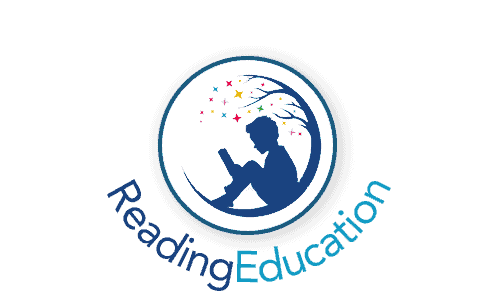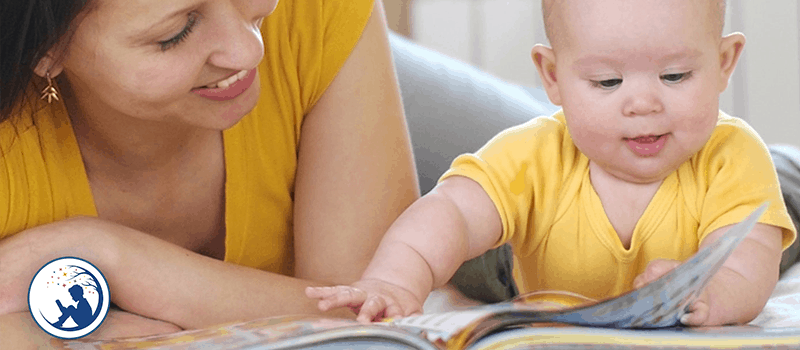I’m sure, like me, when you first became aware of the notion that parents are teaching their babies to read, you raised an eyebrow and thought something along the lines of ‘Babies reading? Is that actually possible?!’. Like most people out there, your initial reaction to such a novel proposition was one of (completely understandable) scepticism; however, it’s not as outrageous as it appears.
Why?
Because it is actually possible to teach your baby how to read; and not only that but it, believe it or not, is relatively simple and straightforward to do. Plus, your son or daughter will no doubt love it!
If you’ve found your way to this page, you’re no doubt curious about whether or not babies can learn to read (which we’ve already established) and what methods and strategies you can use to begin your little one’s reading journey from a very, very young age. To give you a helping hand, we’ve put together this handy, yet concise guide on teaching your baby how to read, covering all of the essential areas and answering the most commonly asked question related to this topic.
Can Babies Actually Learn to Read?
As mentioned above, babies can indeed learn to read and have the ability to do so from as early as three months old. Research indicates that from around three months of age, infants have the capability to learn languages, be that in the form of written words or sign language. Babies can learn languages without any special effort; they’re like a little sponge that soaks up the language that is part of their everyday life.
Babies have a (rather enviable!) advantage over their older human counterparts – brains that are rapidly developing (at a much faster rate than at any other point in their life); therefore, they’re fully able to absorb immense amounts of information – all before they reach their fifth birthday. Many experts deem this period of an infant’s life as the “Window of Opportunity” or as the “Critical Period” due to the fact that the early years of a child’s life is the optimal time to introduce such things to them. Skills, such as the ability to read, are acquired with minimal effort within this timeframe.
How To Teach Babies To Read

Despite the fact that you’ll be unable to hear your infant reading until they’re able to speak, that doesn’t mean that you should wait until your baby can speak before teaching them to read (or at least beginning the process).
A baby’s brain grows through use; therefore, by stimulating your tot’s grey matter, you are strengthening the connections in the brain known as synapses. Synapses are essential for the development of your baby’s intellect both in the short- and long-term. But how can this be achieved? By providing a stimulating and engaging environment for your child – such as exposing them to languages (native, foreign, or sign) or by teaching them to read.
Of the above options, teaching your baby to read might just be the easiest of the trio. After all, most of us don’t speak a second language, nor are we versed in sign language (or have the time and/or resources to become proficient in either). Therefore, the most logical step to take is to teach your infant something you can do exceptionally well: read.
But what’s the best way to teach your infant how to read?
There is no ‘right’ or ‘wrong’ answer to this question; however, you must make it as fun and enjoyable as possible! Here are a few suggestions we have that you might want to take into consideration when teaching your infant to read:
1) Make the word BIG. A baby’s developing vision is unable to recognise and read words at font sizes than older children and adults can. Keep the words as big as possible.
2) When showing your baby words, do so quickly. Babies and children can learn at astonishing rates; therefore, it is crucial to utilise this fast-learning ability and show your infant words rapidly. If they’re shown a word for too long, they may become bored or distracted. It only takes a second (or possibly less) for a child to process any word shown to them.
3) When saying a word, be sure to speak very clearly. Also, try to use a slightly higher-pitched voice – something that seems to happen naturally when talking to babies!
4) Frequency and consistency should be watchwords. Your child must see words regularly in order to master them. To begin with, your infant will learn at a slower rate (even though this will still be incredibly fast), so you will probably need to show them a word 15 to 30 times; however, as they progress, you may only need to show them a word four or five times before it sinks in.
To learn the three primary methods for teaching babies to read, read our article here.
How To Progress?
When starting the journey of teaching a baby how to read, you will, of course, begin with single words. However, once between 25 and 50 words have been taught, you can proceed to combine words to create word pairs or couplets. From this, you can progress to phrases, sentences, and then an entire (short) book.
Once your child has learnt lots of words, it is advisable to introduce them to something called ‘phonics’ (you can read more about this here).
Teaching Babies To Read: Frequently Asked Questions
Here a few of the most commonly asked question related to teaching babies to read:
Shouldn’t my baby learn the alphabet before learning to read?
Infants have the ability to learn to read complete words without having any knowledge of the letters of the alphabet. That being said, children need to learn ‘phonics’ to enable them to sound out words (phonetic reading). Although some believe that children shouldn’t learn to read whole words, others believe that learning to read as young as possible has a myriad of benefits, and provided that a child begins learning phonics prior to beginning school, they will have no trouble becoming fluent readers.
What if my baby doesn’t seem interested or enjoy reading?
The golden rule of teaching children (of any age) anything, is to make it fun and enjoyable. Remember, teaching young infants isn’t setting goals and attaining target; it’s about providing them with the ability to learn to read at an age when they are most receptive. If you’re consistent with teaching your baby to read, it will, more likely than not, become an integrated part of everyday life. At this point, a child will become used to learning every day and see it as the norm…but you’ve still got to make it as fun as you possibly can!
If I want to teach my baby to read, which methods should I use?
Although it may seem like the obvious way forward, reading books to your child isn’t going to teach them how to read. Instead, it would help if you focused on single words, consistency, and short duration lessons. There are a myriad of ways to teach your infant to read, and if you’d like to discover more about these methods, we highly recommend you check out our article here.

